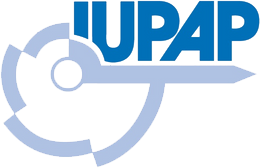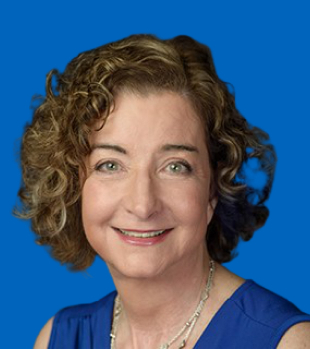
The International Union of Pure and Applied Physics is an international non-governmental organization whose mission is to assist in the worldwide development of physics, to foster international cooperation in physics, and to help in the application of physics toward solving problems of concern to humanity. It was established in 1922 and the first General Assembly was held in 1923 in Paris. The Union is domiciled in Geneva, Switzerland.
The International Commission for Optics (ICO) was created in 1947 with the objective to contribute, on an international basis, to the progress and dissemination of the science of optics and photonics and their applications. It emphasises the unity of the crossdisciplinary field of optics.

The American Institute of Physics (AIP) promotes science and the profession of physics, publishes physics journals, and produces publications for scientific and engineering societies. The AIP is made up of various member societies. Its corporate headquarters are at the American Center for Physics in College Park, Maryland, but the institute also has offices in Melville, New York, and Beijing.
The first Shelter Island Conference on the Foundations of Quantum Mechanics was held from June 2–4, 1947 at the Ram's Head Inn in Shelter Island, New York. Shelter Island was the first major opportunity since Pearl Harbor and the Manhattan Project for the leaders of the American physics community to gather after the war. As Julian Schwinger would later recall, "It was the first time that people who had all this physics pent up in them for five years could talk to each other without somebody peering over their shoulders and saying, 'Is this cleared?'"

Isamu Akasaki was a Japanese engineer and physicist, specializing in the field of semiconductor technology and Nobel Prize laureate, best known for inventing the bright gallium nitride (GaN) p-n junction blue LED in 1989 and subsequently the high-brightness GaN blue LED as well.
STATPHYS or IUPAP International Conference on Statistical Physics is a series of conferences organized by the International Union of Pure and Applied Physics. The conferences take place every three years in a different continent to give the maximum international relevance and visibility to the event. It is the world event for the broad field of statistical physics and all its interdisciplinary developments. The first meeting was in Florence (Italy) from 17 to 20 May 1949. After a pioneering period the periodicity of three years was established and the conference has acquired more and more importance. The participation has reached peaks up to 1500 participants in the recent years. Also on the occasion of this conference the prestigious Boltzmann medal is awarded. In addition several satellite meetings are usually held along with the main event, adding to the scientific value of the meeting.
The International Workshop on Nitride Semiconductors (IWN) is a biennial academic conference in the field of group III nitride research. The IWN and the International Conference on Nitride Semiconductors (ICNS) are held in alternating years and cover similar subject areas. IWN is pioneered by Isamu Akasaki and Hiroshi Amano, who are Nobel laureates in physics (2014)

David J. Lockwood is a Canadian physicist and researcher emeritus at the National Research Council of Canada (NRC). He is also an adjunct professor at the University of Windsor in Windsor, Ontario, editor of the journal Solid State Communications, editor of the Springer book series "Topics in Applied Physics", and secretary-treasurer of the Canadian Association of Physicists. Lockwood is a Fellow of the Royal Society of Canada, the American Physical Society, the Electrochemical Society, and the Institute of Physics.
The index of physics articles is split into multiple pages due to its size.

Laura H. Greene is the Marie Krafft Professor of Physics at Florida State University and chief scientist at the National High Magnetic Field Laboratory. She was previously a professor of physics at the University of Illinois at Urbana-Champaign. In September 2021, she was appointed to the President's Council of Advisors on Science and Technology (PCAST).
Vasily Astratov is a full professor of Physics and Optical Science at the University of North Carolina at Charlotte. He became known for launching synthetic opals as new self-assembled photonic crystals for visible light in 1995 in his former group at Ioffe Institute in Russia. This work has resulted in a quest for inverse opals with a complete three-dimensional photonic band gap
The International Conference on Low Temperature Physics (LT) is an academic conference held every three years near the month of September attracting on average well over a thousand participants from all over the world. The LT conferences are endorsed by the International Union of Pure and Applied Physics (IUPAP) via its Commission on Low Temperature Physics (C5). The mandate of the LT conferences is to promote the exchange of information and views among the members of the international scientific community in the general field of Low Temperature Physics.
Chennupati Jagadish, an Indian-Australian physicist and academic, is the President of the Australian Academy of Science, and a Distinguished Professor of Physics at the Australian National University Research School of Physics. He is head of the Semiconductor Optoelectronics and Nanotechnology Group which he established in 1990. He is also the Convener of the Australian Nanotechnology Network and Director of Australian National Fabrication Facility ACT Node.
Indium aluminium nitride (InAlN) is a direct bandgap semiconductor material used in the manufacture of electronic and photonic devices. It is part of the III-V group of semiconductors, being an alloy of indium nitride and aluminium nitride, and is closely related to the more widely used gallium nitride. It is of special interest in applications requiring good stability and reliability, owing to its large direct bandgap and ability to maintain operation at temperatures of up to 1000 °C., making it of particular interest to areas such as the space industry. InAlN high-electron-mobility transistors (HEMTs) are attractive candidates for such applications owing to the ability of InAlN to lattice-match to gallium nitride, eliminating a reported failure route in the closely related aluminium gallium nitride HEMTs.
Igor Aharonovich is an Australian physicist and materials engineer. He is a professor at the School of Mathematical and Physical Sciences at the University of Technology Sydney (UTS). Igor investigates optically active defects in solids, with an overarching goal to identify new generation of ultra-bright solid state quantum emitters. His main contributions include discovery of new color centers in diamond and hexagonal boron nitride as well as development of new methodologies to engineer nanophotonic devices from these materials.
Manijeh Razeghi is an Iranian-American scientist in the fields of semiconductors and optoelectronic devices. She is a pioneer in modern epitaxial techniques for semiconductors such as low pressure metalorganic chemical vapor deposition (MOCVD), vapor phase epitaxy (VPE), molecular beam epitaxy (MBE), GasMBE, and MOMBE. These techniques have enabled the development of semiconductor devices and quantum structures with higher composition consistency and reliability, leading to major advancement in InP and GaAs based quantum photonics and electronic devices, which were at the core of the late 20th century optical fiber telecommunications and early information technology.

Martin D. Dawson FInstP FOSA FIEEE FRSE FRS is a British professor of photonics who is research director of the Institute of Photonics at the University of Strathclyde and is Head of Fraunhofer Centre for Applied Photonics. He has made pioneering contributions in several applied photonics areas.
Sumathi Rao is an Indian theoretical physicist and professor at the International Centre for Theoretical Sciences, Bengaluru, working in the field of condensed matter physics. She is a former member of women in physics promotion of International Union of Pure and Applied Physics (IUPAP) from 2000 to 2008.
Debora M. Kane is a Professor of Physics at Macquarie University, where her research interests are in non-linear optics and laser physics. She is a Fellow of The Optical Society and has edited four books on nanotechnology, nanomaterials and semiconductor lasers.

Prineha Narang is an American physicist and computational material scientist. She is a Professor of Physical Sciences and Howard Reiss Chair at the University of California, Los Angeles (UCLA). Narang currently serves as a U.S. Science Envoy approved by the Secretary of State to identify opportunities for science and technology cooperation. Before moving to UCLA, she was first an Environmental Fellow at Harvard University Center for the Environment and then an Assistant Professor in the John A. Paulson School of Engineering and Applied Sciences at Harvard University. Narang’s work has been recognized internationally by many awards and a variety of special designations, including the Mildred Dresselhaus Prize, the 2021 IUPAP Young Scientist Prize in Computational Physics, a Friedrich Wilhelm Bessel Research Award from the Alexander von Humboldt Foundation, and a Max Planck Sabbatical Award from the Max Planck Society. Narang also received a National Science Foundation CAREER Award in 2020, was named a Moore Inventor Fellow by the Gordon and Betty Moore Foundation for the development for a fundamentally new strategy for single molecule sensing and environmental toxin metrology using picoscale quantum sensors, CIFAR Azrieli Global Scholar by the Canadian Institute for Advanced Research, and a Top Innovator by MIT Tech Review. Narang was awarded a Guggenheim Fellowship in 2023.






